Solanum lycopersicum ‘Yellow Pear’
You never forget your first. Homegrown heirloom tomato plant, that is.
Well, I haven’t, at least. It was a ‘Yellow Pear,’ purchased during one of the first years I lived in Knoxville, Tennessee.
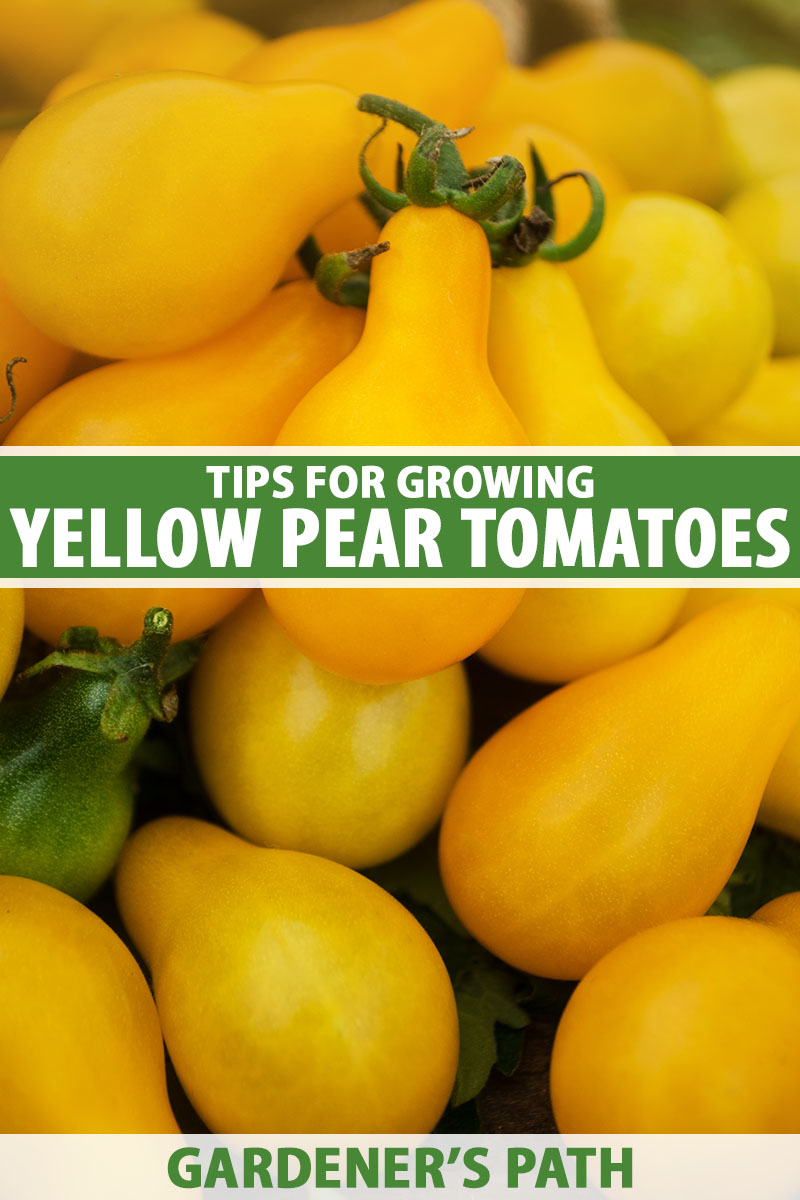
We link to vendors to help you find relevant products. If you buy from one of our links, we may earn a commission.
When I was a kid in Williamsburg, Virginia, our family grew flowers and the occasional parsley or bell pepper plant.
Homegrown tomatoes were the province of our neighbor, Mr. Sherman, a history professor who had summers free to dedicate to amending our sandy soil, fertilizing, caging, watering, and pruning hybrid beefsteaks.
Years later, single and renting part of a house, I bought four of these plants on a whim. A yellow tomato! What a lark.
I’ve learned since that ‘Yellow Pear’ is a favorite in this area.
I was amazed at how easily they grew in our clay soil, and how readily they produced tiny fruits starting in midsummer. And I was enchanted with both the pear shape (though to me they look more like miniature bottle gourds) and the mild taste.
I’ve changed quite a bit since that first experience, but my affection for ‘Yellow Pear’ has remained constant.
I’ve grown this variety as a lure for my vegetable-hating stepdaughter, as an ingredient when I went through an “all gazpacho, all the time” phase, and again, more recently, when I got hooked on the simple pleasure of skillet-charred tomatoes with a balsamic glaze.
If you’re interested in an heirloom that the kids might like, and have what it takes to handle a vining tomato, you could find ‘Yellow Pear’ is to your liking.
Before you decide, let me walk you through a bit of its history, and share a few tips that will help you grow and care for this cultivar.
Here’s what I’ll cover:
What You’ll Learn
What Are Yellow Pear Tomatoes?
The wild species of tomato has been traced back to the Andes Mountains in South America, and its use dates back to pre-Columbian times in Mexico.
These members of the nightshade family were transported to Europe in the early 1500s, with Spaniards and Italians being the first Europeans to adopt tomatoes as a foodstuff.
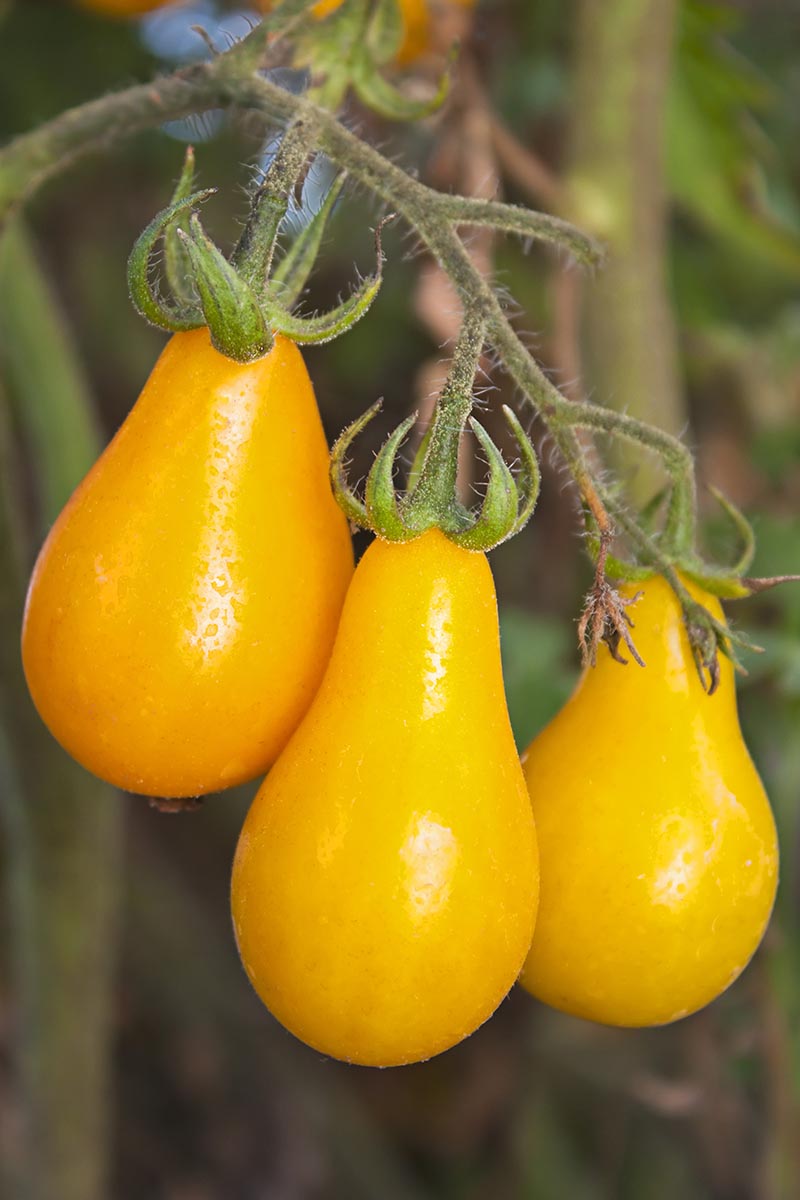
French and Northern Europeans grew the attractive plants with their yellow flowers for decoration, but rejected them for the table because they were rumored to be toxic, as a relative of deadly nightshade.
You might imagine ‘Yellow Pear’ was a fairly recent addition, as far as cultivars go. The zany yellow teardrop-shaped fruits do look cool and modern. But believe it or not, there are records of this plant from the 1700s.
According to a study published in 2004 by plant biologist Steven Tanskley and Cornell University colleagues, a mutation of the ovate gene makes pear-shaped tomatoes grow longer at the top and more bulbous at the base, a trait they share with other fruits that have that shape, like eggplant.
While the Cornell plant breeders were able to replicate the trait based on genes from an existing pear tomato, we home gardeners can count on seeds or transplants to produce these tomatoes with the nostalgic long-neck shape without further intervention.
If you’re interested in growing your own bumper crop, keep reading for tips that will ease the way.
Growing Tips
If you’re a beginner, be sure to read our comprehensive guide for step-by-step instructions for growing and caring for tomatoes.
But even the most experienced growers can benefit from these specific tips for ‘Yellow Pear’ heirloom vines.
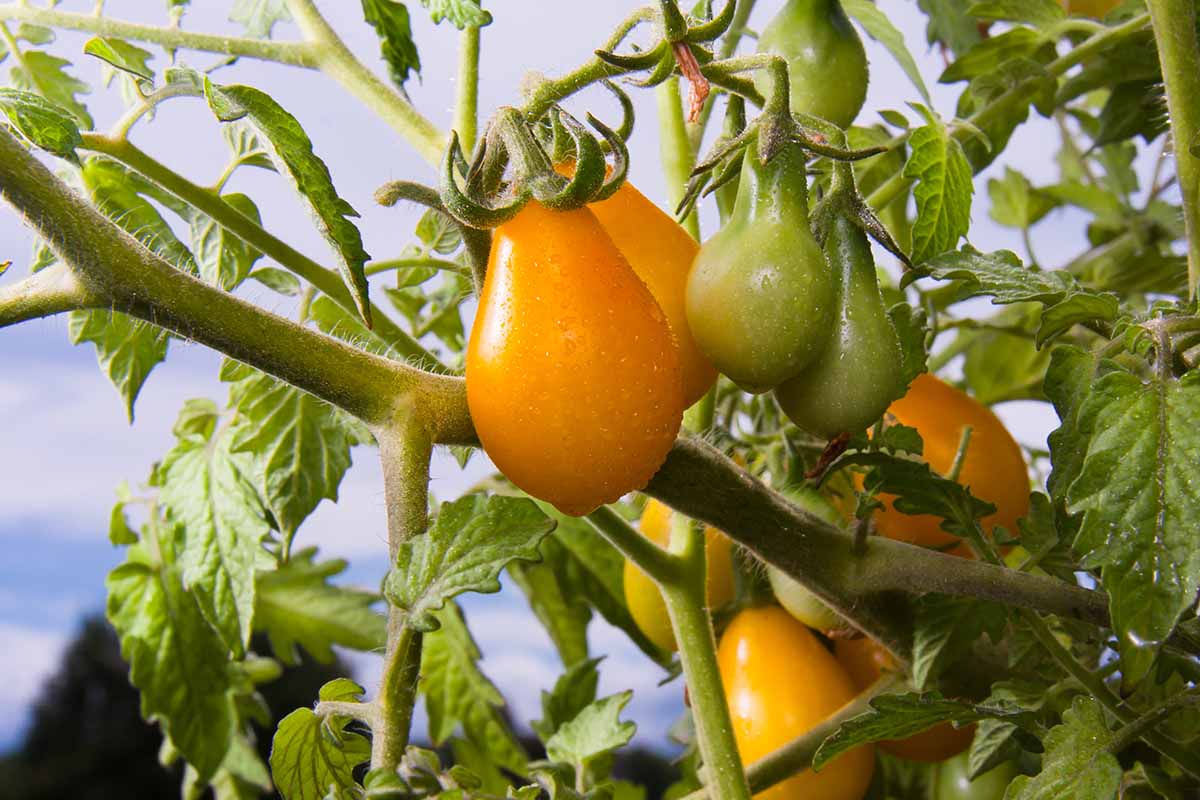
My top piece of advice for anyone interested in planting ‘Yellow Pear’ in the home garden is to remember that it’s an heirloom and that it’s an indeterminate vine.
Heirloom status means it won’t produce quite as many fruits as some hybrids, and the indeterminate nature means it grows to be very tall, and possibly unwieldy if you’re not paying attention.
To avoid the drawbacks and maximize the yield of these tomatoes, use these tactics:
Allow Enough Space
While the fruits are tiny, these plants grow six to 12 feet tall and spread about three feet.
Even if you prune them, they’ll reach about five feet tall, and they need to be provided with plenty of water and nutrition throughout the growing season.
These are wonderful for growing directly in the ground. If you’re looking for a variety that’s container-friendly, you can certainly choose a ‘Yellow Pear,’ but I wouldn’t opt for it as your first pick.
Keep in mind that each plant needs at least a five-gallon-size container with drainage holes, six feet or more of support – either in the container or right next to it – and several inches of water per week throughout the growing season in the absence of rain.
If you’re not up for that kind of labor, you may want to opt for a different heirloom tomato variety for container gardening.
May I suggest ‘Baxter’s Bush’ cherry tomatoes? These heirlooms mature 70 to 72 days from transplant and grow on compact bushes that reach just 30 to 36 inches tall.
Packets of 65 Baxter’s Bush seeds are available from Burpee.
Make Sure You Have Enough Time
These heirlooms need 75 to 80 days from transplant to begin producing. In contrast, some of the hybrid cherry tomatoes you might be used to yield ripe fruit in as little as 60 days.
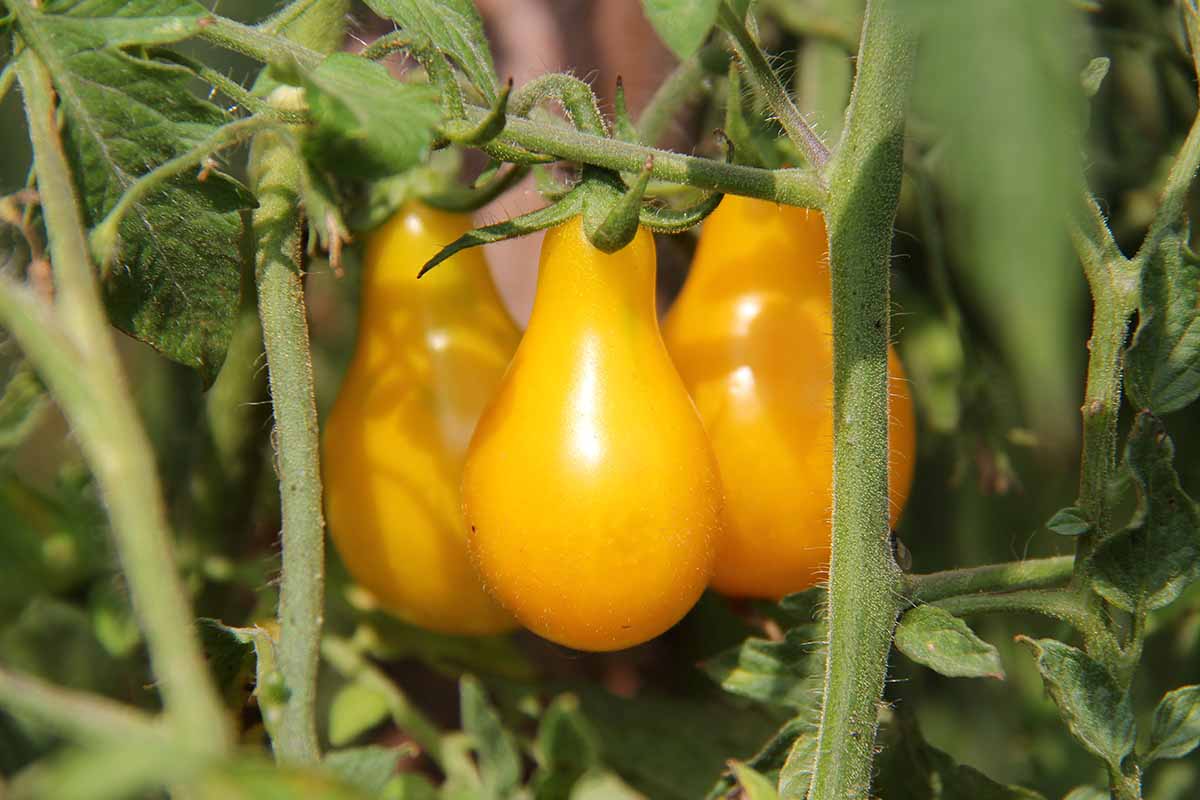
Be sure to use your gardening calendar or another prompt to assure that you plant in time to be able to harvest in your area.
Consider whether you might need row covers or to use other means to protect the plants if you are gardening in an area with a short growing season.
And if you are starting ‘Yellow Pear’ from seed, be sure you allow enough time for the seedlings to get big enough to transplant a couple of weeks after the danger of frost has passed in your area.
The general rule of thumb is to sow eight weeks ahead of the average last frost date. You don’t want to start plants from seed too early, or they’ll be leggy and may become root bound by the time you plant.
But if you don’t sow this particular indeterminate variety indoors at least six weeks before the arrival of spring, you’re better off opting to buy starts online or from a local nursery.
Plant in an Accessible Spot
This can be a bit tricky. These vines grow tall, and you’ll want to be able to reach the harvest readily.
Be sure to locate your plants where you can reach the top of the vines when you need to pick, and leave a path or other opening so you can place a step-stool or short ladder safely nearby.
Also, consider growing the plants where you can pick quick snacks without further ado. I’ve grown them on an arbor that abuts the back porch, and in a small plot right near the driveway so I can pick a few on my way in from running errands.
This convenience really pays off later in the season, when you may get a bit weary of keeping up with the harvest.
When you grow in a spot where small children can easily access the plants, you’ll have the aid of little helpers. (And if you don’t watch too closely, kids might “discover” these tasty fruits on their own, and begin a habit of liking both vegetables and gardening.)
Transplant Below the Soil
‘Yellow Pear’ vines need healthy roots and strong stems to support the eventual harvest.
Get them off to a good start when you transplant the seedlings. First, strip the little side shoots from the bottom of the seedlings, leaving just the main stem in place, or maybe two.

Then place the transplant in the ground below the soil line by at least a couple of inches. Only the top three or four inches of the seedling should protrude above the soil.
It will look a little odd, seeing just a few leaves after you’ve gotten used to the lush, foliage-heavy starts.
But the plants will resume growing tall quite quickly, and they’ll be stronger than any seedlings you plant with the stems at the level of the soil surface.
Provide Tall Stakes or Cages
Have you seen those cute, colorful tomato cages that are about 36 inches tall?
Save them for growing eggplant, or a shorter tomato variety.
‘Yellow Pear’ gets tall, growing to at least six feet, and sometimes as high as 10 or 12 feet.
You’ll want the stakes, cages, or trellises you use to be close to the same height, to provide adequate support.
We’ve had great success with bamboo poles and makeshift arbors made of boards and chicken wire in my garden.
Okay, there was that time in 2014 when the ‘Yellow Pear’ took over a nearby evergreen tree and my husband had to pick them using a six-foot ladder… but I have learned from that mistake and trust you will be able to pay closer attention than I did that season.
There are lots of other options for this necessary support, including stakes, fence panels, and trellises.
Or consider a Florida weave. Learn about that and other homemade supports in our guide.
Keep Up with Watering and Fertilizing
Again, don’t let the cute, quirky-shaped fruit mislead you.
These vigorous plants are sizable, and they’ll require a lot of water and plenty of nutrients to provide a bumper crop.

First, the water. You can help the soil retain moisture from the outset by planting in a spot with well-draining soil, and amending it with plenty of aged compost or other organic material that’s rich in nutrients.
Also be sure to mulch the plants once they’re a few inches tall, using untreated pine straw, grass clippings, leaf mulch, or shredded bark.
Just remember not to let the mulch touch the main stem of the plant, or you’ll encourage disease. And never use a product that’s been treated with herbicide or pesticides in a garden – either one will destroy your precious vegetable plants, or their ability to bloom or set fruit.
The plants will need an average of an inch of water per week, which should come from your efforts when the rain does not suffice. You can check precipitation levels in your garden with a rain gauge.
Keep in mind that container-grown ‘Yellow Pear’ will need far more frequent watering than plants grown in the ground, particularly in the heat of summer.
These plants will also benefit from extra feeding. Start about a month after transplanting, and give a booster if you think about it once every three or four weeks.
Cease with the fertilizer once the plants start to set fruit. At that point, they no longer need nutrients for strong roots or stems, since the plant will focus all of its energies on producing fruit.
Use a water-soluble mix designed for tomatoes and apply it according to the manufacturer’s directions.
Fox Farm Grow Big Liquid Concentrate is a good choice since it’s safe for use on edible crops, and also mild enough not to burn the plants or roots.
Fox Farm Grow Big Liquid Concentrate
It has a mix of worm castings, Norwegian kelp, and various minerals like potassium and magnesium among its all-natural ingredients.
Fox Farm Grow Big concentrate is available from Terrain in one-quart containers.
Prune for Shorter Vines
If you’re willing to sacrifice a bit of the harvest, you can certainly prune to limit how tall your ‘Yellow Pear’ plants will grow.
Promote Disease Resistance
As heirlooms, ‘Yellow Pears’ can be a bit more prone to disease than modern hybrids.
You can help prevent the spread of waterborne disease by spacing the plants at least two feet apart so wet foliage dries quickly, and never watering from above the leaves. Aim your hose or watering can at the soil line only!
Also prune the bottom suckers when you first transplant, to keep the fruit and foliage off the ground as the plants grow, and to discourage the spread of soilborne diseases.
Learn more about detecting, preventing, and treating common tomato diseases in our guide.
Eat the Ripe Fruits Quickly
This old-time variety was not bred to produce fruits with thick skins that could last weeks and weeks while being transported hundreds of miles to market. So they don’t really keep well – maybe four or five days on the counter.
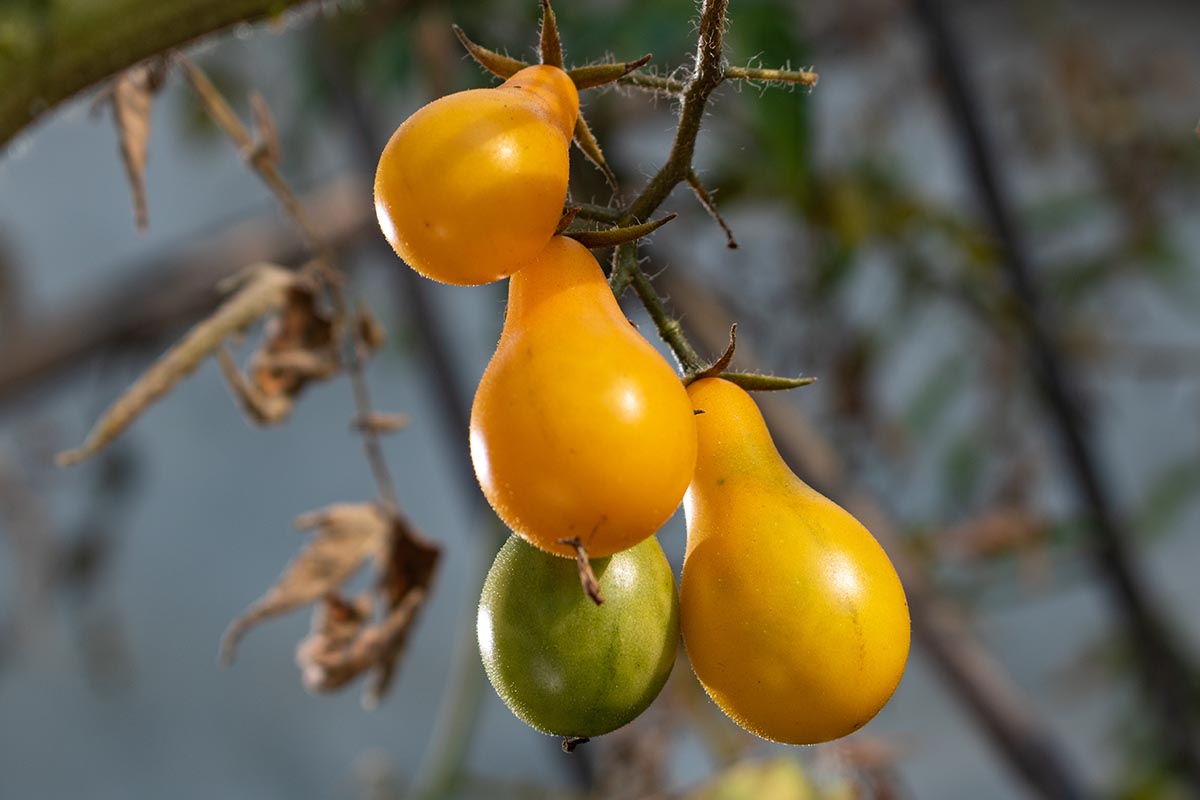
Be sure to eat them quickly or preserve them before they get mushy. Dehydration is one option, and our sister site, Foodal has all the details on how to use a dehydrator to make pseudo-“sun-dried” tomatoes.
When the first frost is looming and you still have green tomatoes on the vine, you may be able to pick them in a hurry and pickle or chop them for freezing.
It’s not always worth the trouble to try to ripen smaller tomatoes indoors, but you can determine your odds of success in our guide to making tomatoes turn red – or in this case, bright yellow!
For more information on storing or freezing tomatoes, check out our guides.
Consider Saving the Seeds
Because ‘Yellow Pear’ is an open-pollinated hybrid, it is possible to save the seeds. Bear in mind, though, that the plants may cross with other S. lycopersicum varieties planted in your yard, or even in a neighbor’s.
That cross-pollination won’t affect the fruits of this year’s crops, but the seeds from those tomatoes may produce a bizarre cross.
It’s best to stick with store-bought seeds unless you are growing just this one variety – or don’t care if you end up with a random tomato type next season.
Learn more how-tos for saving tomato seeds in our guide.
Where to Buy
The Seed Savers exchange conducted trials of literally dozens of types of yellow pear, with the winner among the varieties being a variety with one-and-a-half-inch fruits known as ‘Beam’s,’ introduced to the heirloom seed preservationists in 1983 by John Hartman of Indiana.
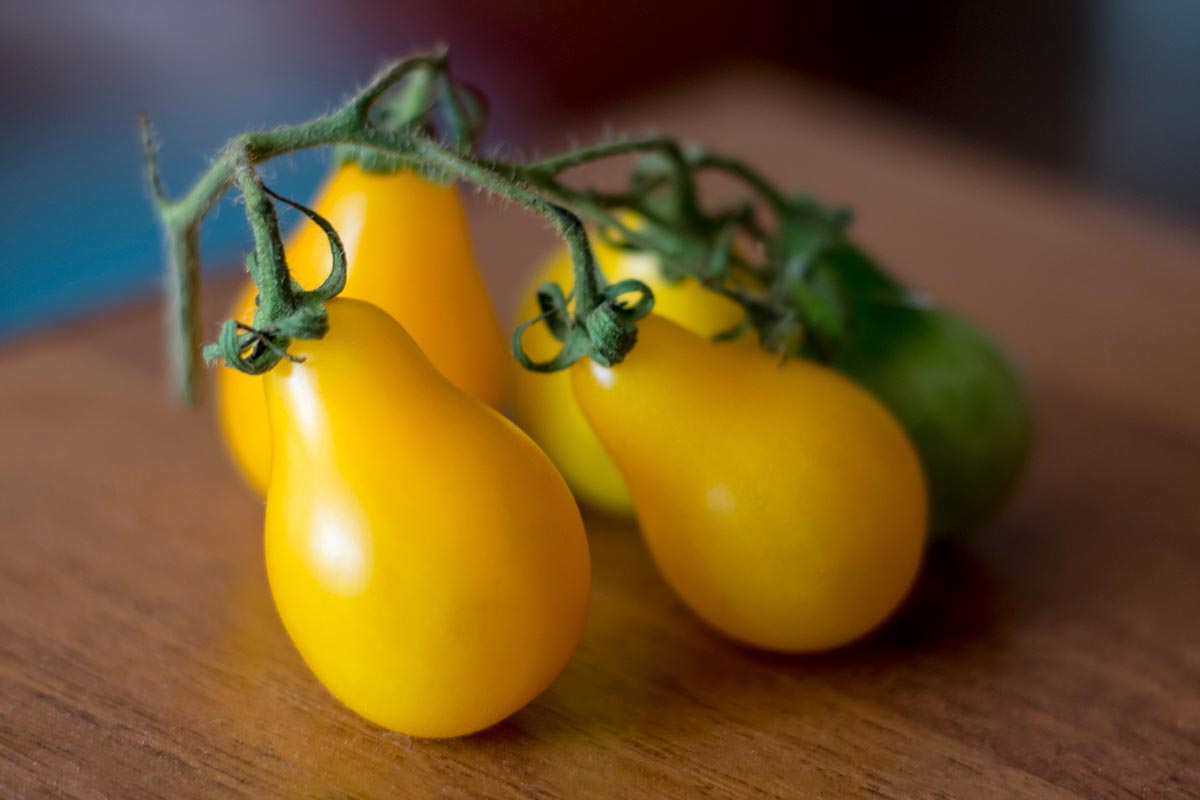
Most options sold for the home garden will simply be labeled ‘Yellow Pear,’ and they tend to all look fairly similar, with one- to two-inch fruits in hues ranging from deep gold to lemony yellow.
In my area, this variety is sometimes widely available in four- or six-packs to transplant. But just as often, in some years, it can’t be found at all.
If you’re in a similar situation, you’ll be happy to know there are live plants available online.
Burpee has live plants available as part – or all, if you wish! – of a “mix and match” bundle of three.
If growing this heirloom from seed is more appealing, you can find packet sizes and bulk sacks available from True Leaf Market.
Botanical Interests offers a mix of yellow and red pear tomatoes in 30-seed packets, if you’re interested in growing a mix.
Cooking Ideas
Some cooks consider ‘Yellow Pear’ as worthy as any variety of paste tomato.
If you want to cook yours into a sauce or jam, just keep in mind that while they do have fewer seeds than many cherry tomatoes, they also have a higher water content than most other canning tomatoes.
I’m not saying don’t use them, only that you might have to cook them down longer than other varieties before they dissolve into a consistency that’s good for sauce.
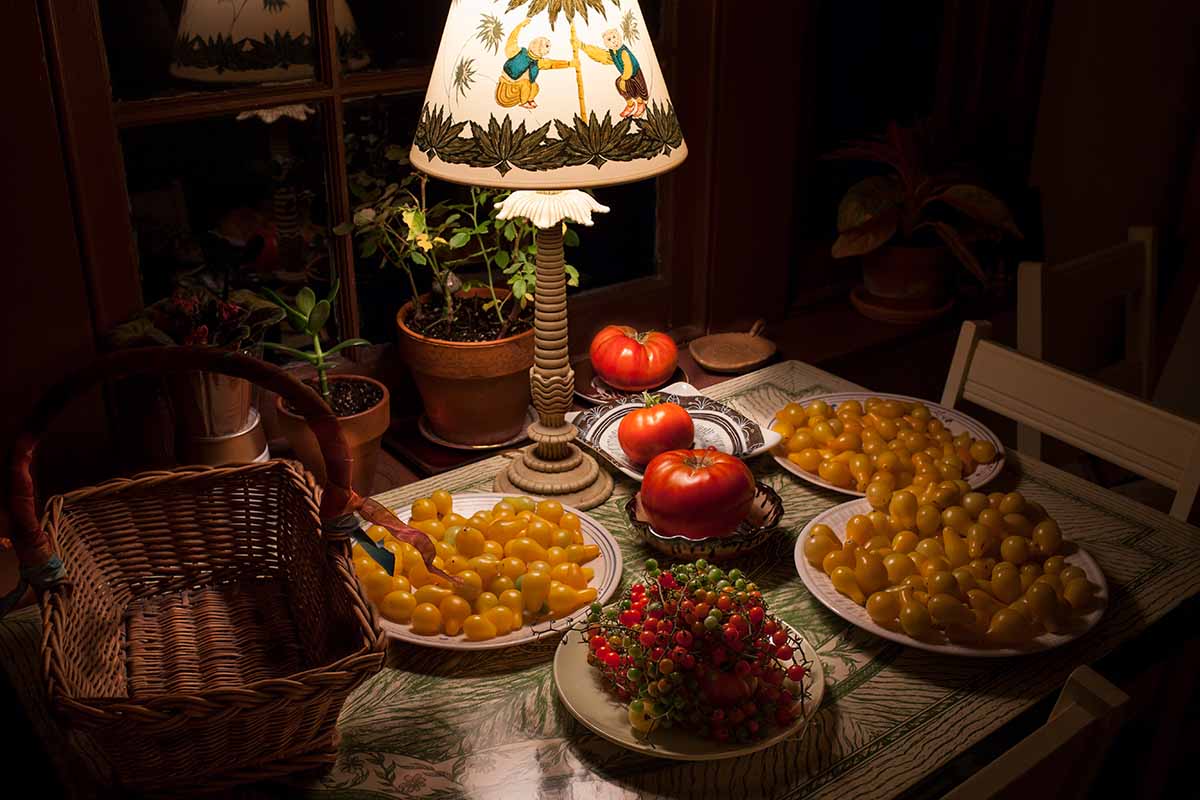
I commonly make a big batch of pizza sauce with this homegrown produce, and the yellow color is quite pleasant as an alternative to red sauce – and complements a ruby basil topper, too.
Speaking of pizza, these gems also make a handy, pretty topping to elevate a frozen pie. To learn the technique, check out Foodal’s suggestions.
They’re also a great choice for fresh salsa, like Foodal’s take on basic pico de gallo.
And don’t forget to grab a couple of handfuls to slice in two for adding summery flavor to everyday dishes, like Foodal’s recipe for chicken cutlets with tomatoes to rescue your weeknight dinner plan.
Quick Reference Growing Guide
| Plant Type: | Annual vegetable | Tolerance: | Heat |
| Native To: | Central and South America | Maintenance: | Moderate |
| Hardiness (USDA Zone): | 5-8 | Soil Type: | Organically rich |
| Season: | Summer | Soil pH: | 6.0-6.8 |
| Exposure: | Full sun | Soil Drainage: | Well-draining |
| Time to Maturity: | 75-80 days | Companion Planting: | Basil, beans, chives, cucumbers, garlic, lettuce, marigolds, nasturtiums, onions, parsley, peppers |
| Spacing: | 24-36 inches | Avoid Planting With: | Brassicas, corn, dill |
| Planting Depth: | 1/2 inch (seeds), top 4 inches of starts above the soil line (transplants) | Family: | Solanaceae |
| Height: | 6-12 feet | Genus: | Solanum |
| Spread: | 30-36 inches | Species: | Lycopersicum |
| Water Needs: | High | Cultivar | 'Yellow Pear' |
| Common Pests: | Aphids, cutworms, flea beetles, hornworms, thrips, whiteflies | Common Diseases: | Alternaria stem canker, anthracnose, black mold, blight, blossom end rot, botrytis gray mold, fusarium wilt, leaf spot, mosaic virus, powdery mildew, verticillium wilt |
A Summer Affair with the Yellow Pear
I love when my summer includes the simple pleasures of growing ‘Yellow Pear’ tomatoes in my garden plot or raised beds.
The profusion of tiny, mild fruits encourages me to eat more healthfully, especially at lunch. There’s really no excuse for reaching for kettle-fried chips with a juicy, mild alternative ready to pluck on an afternoon stroll through the backyard.
And the memories stirred by the tiny tomatoes with their quirky shapes and enthusiastically climbing vines feed my soul.

That’s quite a payback for the price of a pack of transplants, a few tomato cages, and the occasional bout of supplemental watering or boost of fertilizer.
Have you also grown this particular heirloom? Or do you perhaps still have a question or two lingering before you are able to settle on this cultivar for your own veggie patch?
The comments section below is a welcoming place for both tips and queries, so go ahead and add your input if you’d like.
And if reading this guide left you wanting more info on heirloom or tiny tomatoes to grow in your garden, check out these guides next:

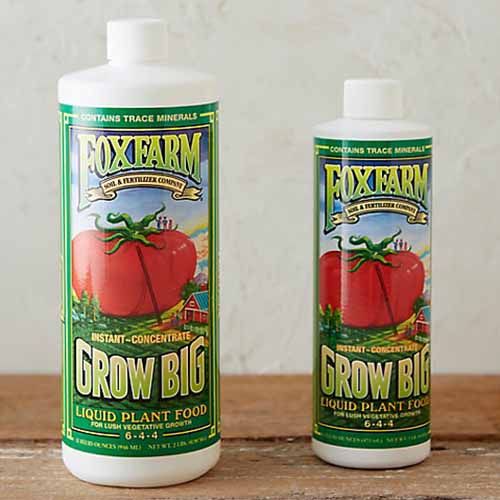
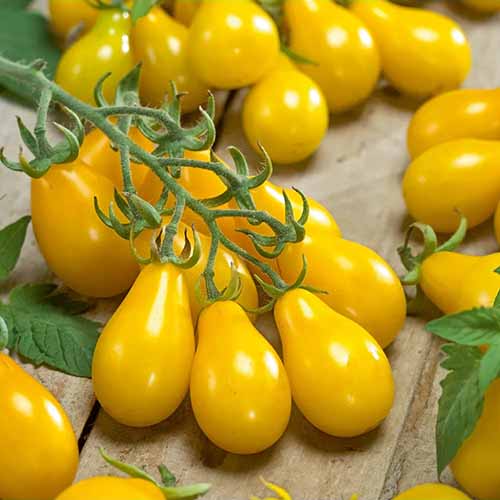
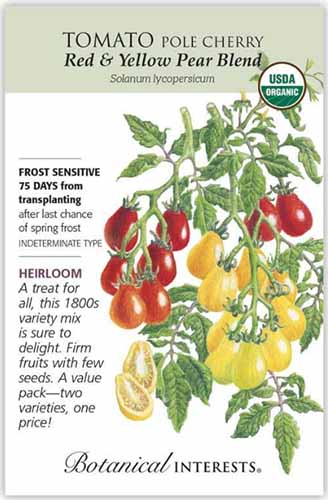
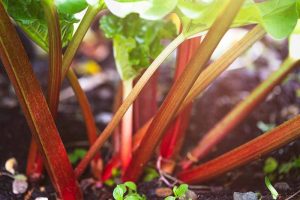
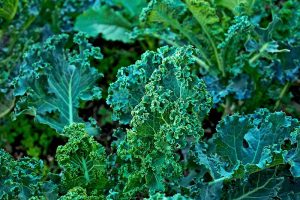
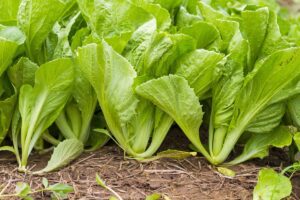
Thanks for the fun and very informative article on Yellow Pears, Rose!
Hello hello!
Im new at growing pear tomatoes and had some volunteer seeds come up. The plant is now getting fruit but they are teeny tiny jelly bean size.. should I sacrifice some of the fruit to allow the rest to grow larger? Should I fertilize? Also just started noticing some white fly…
Help!
Hello Michelle. This is a common occurrence, the volunteers seeding, since yellow pear is open-pollinated. I imagine they may have crossed with a currant tomato. So no, don’t sacrifice any of the ones you have in the interest of getting larger ones; they’re going to grow as big as they’re going to grow regardless.
Once they start fruiting, you don’t need to fertilize any more. But you might want to take care of those whiteflies!
Good luck and I hope you enjoy the volunteer fruits, whatever they end up being.
I am looking to make jam with these but need a reliable recipe. Conversions of product to jam are not good.
Hello Lee thacker. I have experienced the difficulty with converting tomato recipes and what works best for me is to count two and a quarter cups of chopped tomato for each pound called for in a recipe.
With that in mind, you’d need six and three-quarters cups of chopped yellow pear tomato to cook up this tomato jam recipe from our sister site, Foodal.
Good luck, and please share the results if you can.
Will the Yellow Pear Tomato respond well to horizontal rather than vertical staking? I’m thinking of something like the way grapes are grown. Perhaps just topping the plants around 5 ft would work? In my mid-80’s, I have difficulty managing and harvesting anything too tall.
Hello, Don, and thanks for writing in with this intriguing question. I do believe you could set up a sort of horizontal stake situation, like three waist-high cages with the plant in the center, or a stake with a panel of fence or chicken wire behind it. If you were going to prune, I would do that early on to encourage thick, bushy growth, instead of waiting until the vines are taller than five feet and lopping them off. Considering that the vines would grow along the ground if they weren’t staked at all, I think your idea is sound.… Read more »